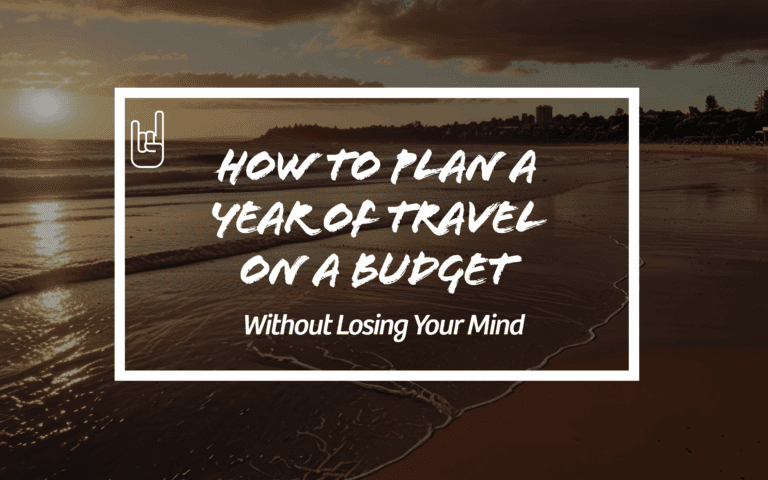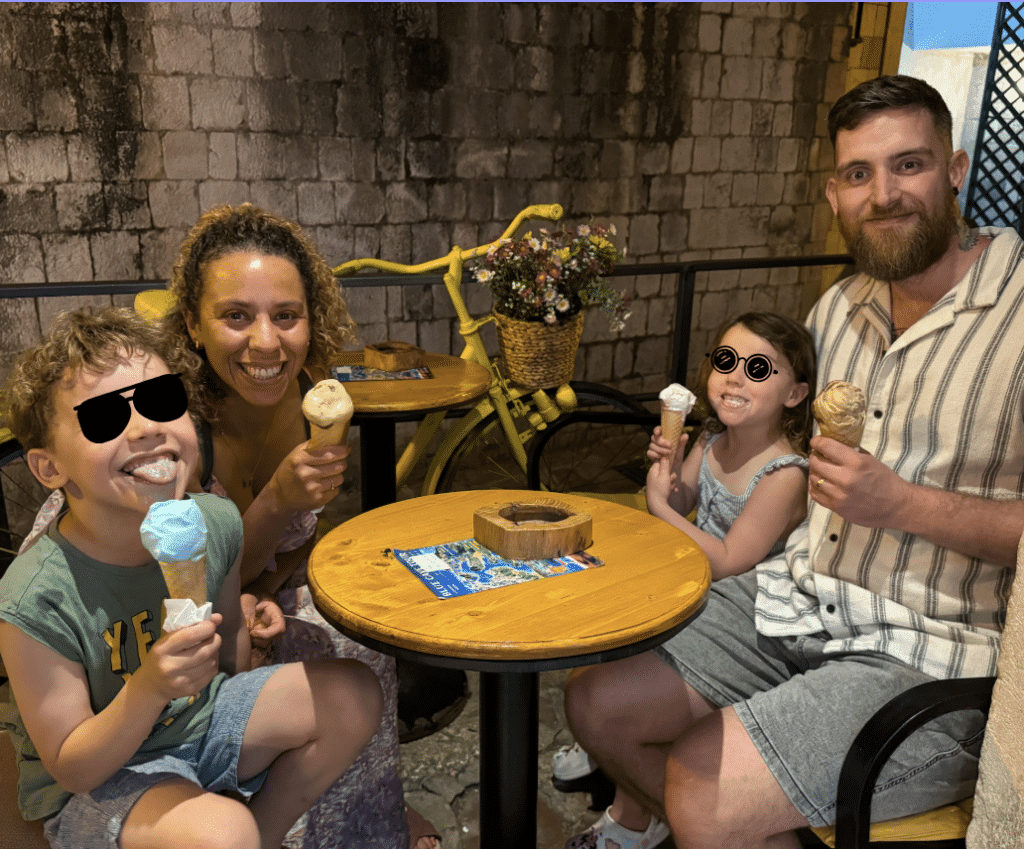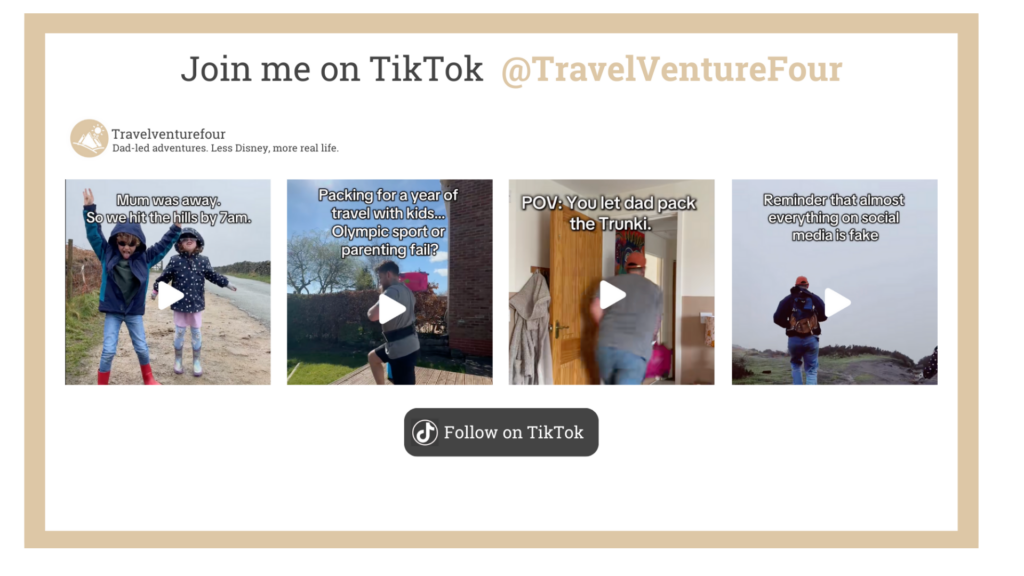How to Plan a Year of Travel on a Budget (Without Losing Your Mind)
Yes, you can plan a full year of travel on a real-world budget, and no, it doesn’t have to drive you mad. From pacing your trip to choosing wallet-friendly countries, here’s how we’re making long-term travel doable (with kids in tow).
Plan in Chunks, Not a Year-Long Line
Trying to map out a full year of travel down to the last hotel? Recipe for burnout. Fast.
One of the biggest mindset shifts we made was moving from “12-month mega itinerary” to 3-month loops. It’s not just easier it’s smarter for your budget.
Why “chunk planning” works better:
Less risk of overcommitting to expensive places or impossible timelines
Built-in flexibility: adjust based on weather, visa issues, or burnout
Easier budgeting: you can track actual costs and re-forecast as you go
A “loop” can be regional (e.g. Quito → Cuenca → Vilcabamba → back to Quito) or time-based (3 months in South America, then reassess). Think of it like budgeting in seasons, not years.
Example: Our South America Plan
We’re structuring our year like this:
Leg 1: Ecuador, 3 months (visa-friendly + low cost of living)
Leg 2: Peru & Bolivia, 2–3 months
Leg 3: Colombia 1-2 months
Leg 4: Panama and Costa Rica 2-3 months
You don’t need it all figured out, but having “chapters” instead of a fixed map gives you flexibility and financial clarity.
Pro tip: Plan each leg with a clear start, end, and cost range, and give yourself a reset moment in between. Your brain (and your bank account) will thank you.
This blog is fuelled by caffeine and chaos, if it helps, support our journey.
Let Your Budget & Visas Choose Your Route
When we first started mapping our route, we made the classic mistake: starting with where we wanted to go, not where we could realistically afford to go or legally stay.
Here’s the truth: your budget and visa rules should shape your route just as much as your bucket list.

Start With Visa Windows
Many countries offer 30–90 day visa-free stays, especially if you’re travelling on a UK, EU, or US passport. That makes slow, affordable travel much easier.
Some examples:
Ecuador: 90 days visa-free
Colombia: 90 days, extendable to 180
Mexico: Up to 180 days
Schengen Europe: 90 days total in 180 days (watch this one carefully)
Use tools like Visa List or your home country’s travel advisory site to build a route that fits your passport’s strengths.
Then Cross-Check Cost of Living
Use Numbeo, Budget Your Trip, or local expat forums to check your dream destinations against reality. You might find:
Portugal is beautiful… but getting pricey
Ecuador offers a much better cost-to-comfort ratio for families
Thailand is budget-friendly, but visa renewals and airfares add up fast
Put Them Together
Aim for countries where you can stay longer legally and spend less daily. That’s how you stretch your budget without sacrificing experience.
Pro tip: Prioritise countries where you can stay 60+ days without hassle, less money spent moving = more room for fun, food, and not crying in an airport queue.
Pace Is Your Budget’s Best Friend
If there’s one golden rule of long-term travel budgeting, it’s this: the slower you travel, the less you spend.
Fast travel might look exciting on Instagram, but it’s a budget-burner:
More flights, buses, and taxis
Short-term stays (which are often pricier)
More “just passing through” spending, cafés, takeaways, one-night splurges
In contrast, slow travel gives your budget room to breathe, and your family time to actually enjoy the place you’re in.
If you’re slow travelling and thinking of South Amercia we have the perfect cost of living guide here

Why Slower = Cheaper
Accommodation Discounts
Most Airbnbs and guesthouses offer steep discounts for 28+ day stays. In Cuenca, Ecuador, for example, a two-bedroom might cost £35/night short-term, but drops to £500/month when booked long-term.Lower Daily Spend
When you’re not sightseeing every day, your costs go down. You’ll cook more, settle into local routines, and stop feeling like every day needs to be “worth it.” You go from holidaying to living in the country and slow down.Fewer Transitions
Each move between cities or countries carries hidden costs: airport transfers, visa fees, higher food spend, and stress spending (“just get snacks, we don’t have time”). Fewer moves = fewer leaks.
Bonus: It’s Better for Your Sanity
Especially with kids (or work in tow), slow travel reduces meltdowns, financial and emotional. You’re not constantly packing, rushing, or recalculating.
Pro tip: Think of slow travel not as “doing less,” but as “experiencing more” while spending less. Built-in 3–4 week stays whenever possible and let your budget breathe.
Budget for Transitions, Buffers & Burnouts
Here’s something most travel budgets miss: you don’t just spend money when you arrive you also spend a lot every time you move. And then a bit more when everything goes sideways.
Planning for these “between moments” is what makes a good budget resilient, not just tidy.
Grab your free budget guide here
Transition Days Are Expensive
Even if you’re a packing ninja, travel days often include:
Extra transport costs (taxis, airport transfers)
Higher food spend (convenience meals, snacks)
Unexpected fees (baggage, early check-out charges)
Panic purchases (SIMs, water bottles, headphones, because someone lost theirs again)
Budget an extra £100–£200 per move (or more for flights). If you don’t need it, great — roll it into the next leg.
Burnout Is Real, So Is the Cost of Recovery

When everyone’s tired, sick, or just done, you spend more. Think:
Ordering food instead of cooking
Booking an Airbnb with a pool because you need a win
Saying yes to taxis instead of walking another mile with backpacks
That’s not failure. That’s real life. Budget for it.
We’ve added a soft “buffer fund” to every leg of our trip: ~10–15% of the monthly total. It covers the wobbles, the ones that don’t fit neatly into “accommodation” or “groceries.”
We booked an airbandb stay and it was nothing like the pictures, it was in a very rough part of the area, we didn’t feel safe, so we booked a nice 2 night stay at a half spa complex…It fit in that buffer fund.
Bonus Tip: Create a “Reset Day” Fund
Give yourself permission (and a budget) for a rest day now and then. One nice meal. A soft bed. Something that resets the mood and the mission.
Final tip: You can plan hard. But planning in wiggle room is what will keep your year on the road sustainable, financially and emotionally.
You Can Travel for a Year on a Budget, Just Not Without a Plan
Long-term travel doesn’t have to mean long-term financial stress, but it does require structure, flexibility, and a bit of humility.
You don’t need to map every moment of the next 12 months. In fact, trying to do that will likely cost you more (in both money and sanity). What you need is a system that bends with you:
Break your trip into legs or loops
Let visas and cost-of-living shape your route
Travel slower than you think you need to
Always budget for the between bits (transitions, resets, and oh-no moments)
You’ll still have to pivot. That’s the nature of the road. But this approach means your budget can stretch without snapping.
And if you’re planning a family trip, a digital nomad year, or even just testing the waters, this is where the real prep starts.
Related Posts to Explore Next:
Bookmark this post if you’re prepping for a long trip and feeling overwhelmed.
Or forward it to your “we should do this” partner the one who needs to see the structure behind the dream.
Want help building your route or budget legs? Drop a comment or message us, we’re figuring this out too, one spreadsheet and snack break at a time.








